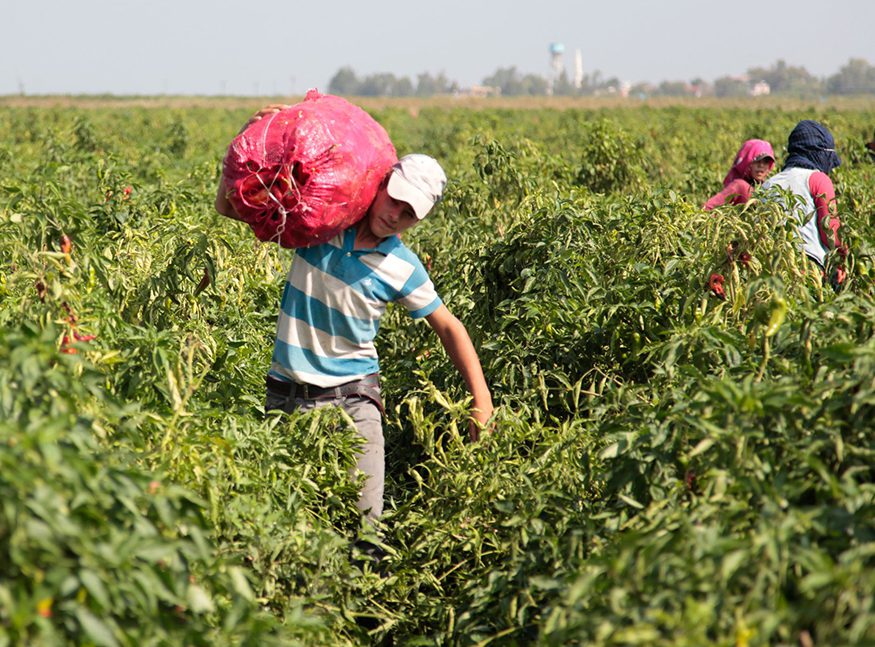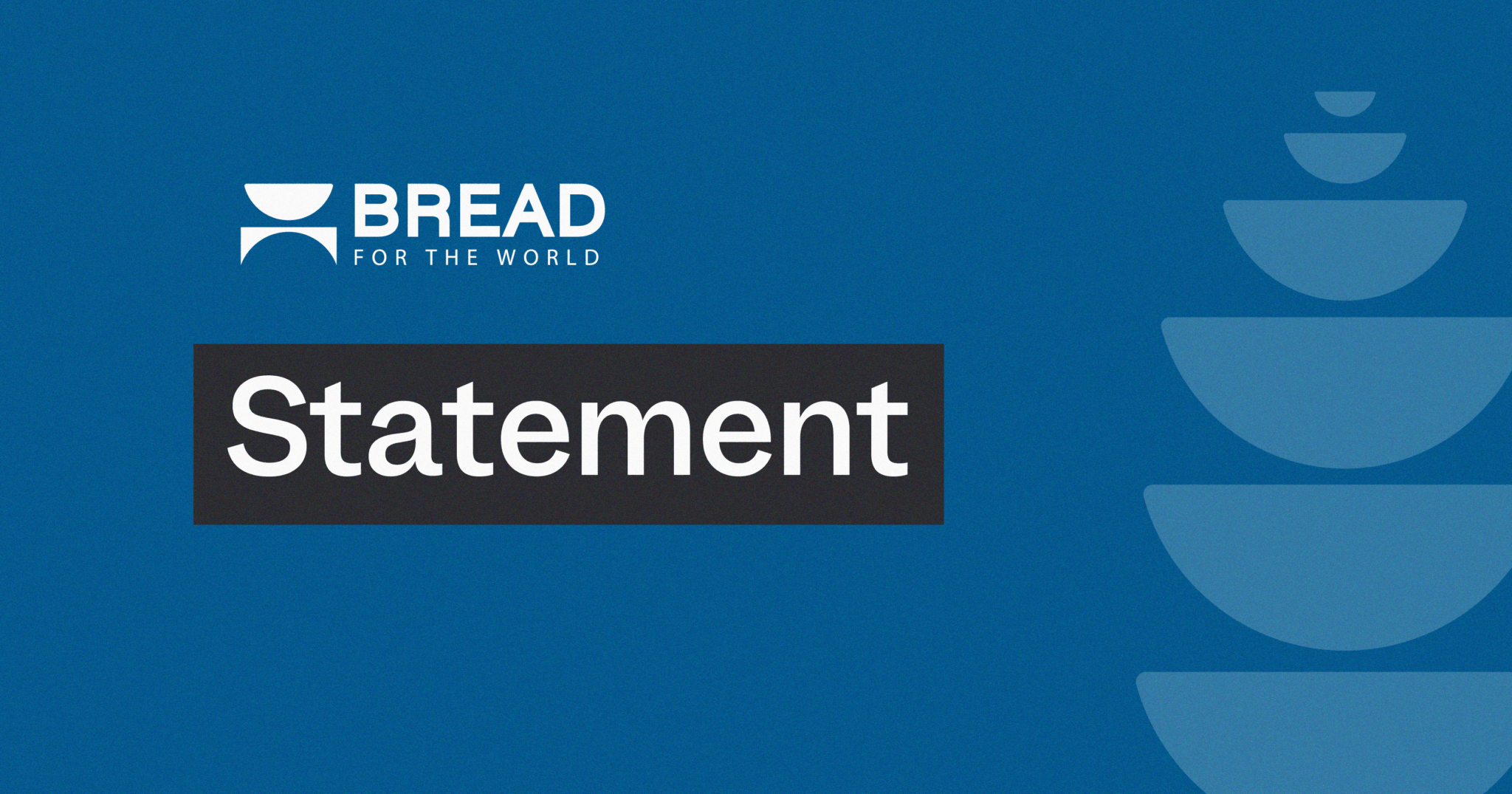By Todd Post
The first-ever, long-awaited U.N. Food Systems Summit is set to take place in September. As Bread has mentioned in previous blog posts, its goal is to build a more sustainable and equitable global system. Food Systems Summit Dialogues are taking place around the world, enabling a multitude of stakeholders to share their views on food system reform.
Last month, I wrote about the food system dialogue that Bread for the World co-convened in June with the National Association of Black Farmers, Federation of Southern Cooperatives, and Land Loss Coalition. These organizations represent large numbers of U.S. Black farmers.
This month I want to talk about child laborers in the global food system. They are a sizeable group of stakeholders, but they are mostly invisible and unheard. In fact, as far as I can tell, they have not been the focus of any Food Systems Dialogue anywhere in the world, nor are there groups that represent them. 2021 is the International Year for the Elimination of Child Labor, so it would be a truly shocking oversight and a huge missed opportunity if a global food systems summit did not pay attention to the problem of child labor and potential solutions.
The phrase “child labor” may call to mind sweatshops or sex trafficking. Both are real and revolting. But of the estimated 160 million child laborers, 70 percent are agricultural workers. Sadly, most are forced into this work by their parents. Some people will respond that this is because families are living in poverty. That is true, but it is not an excuse. Child laborers suffer the same harms regardless of adult motivations or intentions.
More than half of all child laborers are between the ages of 5 and 11. Three-quarters of children in this age group are employed in agriculture, with approximately the same numbers of boys and girls. The U.N. International Labor Organization reports that after two decades of declining rates of child labor, the trend has reversed in recent years. The increasing rates predate the COVID-19 pandemic but they are not yet reflected in the most recent data. The pandemic appears only to have accelerated the increase in child labor.
What can be done to reduce child labor? One strategy is to strengthen social protection. As UNICEF explains, “Social protection covers the range of policies and programs needed to reduce the lifelong consequences of poverty and exclusion. Programs like cash transfers – including child grants, school meals, skills development, and more – help connect families with health care, nutritious food, and quality education to give all children, no matter what circumstances they are born into, a fair chance in life.”
Cash transfers are a form of social protection that have been used in countries around the world to help ensure that children attend school. Governments or donors give families a monthly cash benefit, provided the parents guarantee to keep children in school. Cash transfers are not a cure-all for child labor, however. In part, this is because the governments of low-income countries do not have enough resources to serve all families in need. Another reason is that attending school does not necessarily mean the end of child labor. As many as two-thirds of child laborers attend school as well, but they do poorly academically compared to their peers who are not laborers.
What about the responsibility of people who consume the foods produced by child labor? Consumers have widely diffused influence. Moreover, focusing on personal choices can be a convenient diversion that policymakers and food industries can use to shift the burden of solving problems away from themselves. The private sector—organized companies and businesses that profit from the labor of children– must be held accountable for not doing more to eliminate child labor in their supply chains. They must develop and carry out plans to do better.
All the biggest food companies will be at the U.N. Food Systems Summit. Nestle, Cargill, and other food companies reap windfall profits from child labor. They have never been held accountable in court for their role as accessories. In most countries with a large number of children who are exploited as laborers, the legal systems do not have the capacity or perhaps the will to prosecute them.
It is possible that the countries where these children live simply recognize that their efforts will likely be futile. Most companies in this sector are U.S.-based. When six people from Mali who were former child slaves took their case to the U.S. Supreme Court, the court ruled that the companies could not be held accountable for the injuries they had caused in other countries.
No company that profits from the labor of children should leave the U.N. Food Systems Summit without pledging to invest in ending child hunger. Companies will argue that they already do make these contributions. But it has clearly not been enough. Companies that are profitable can afford to do more.
Another avenue to help reduce child labor is supporting women in agriculture. The economic empowerment of women benefits not only women but their children. When women increase their household income, families are more likely to invest in children’s education, health, and nutrition. This could be a promising area of the summit for efforts to reduce child labor, because the topic of women in agriculture is championed by the Special Envoy for the Food Systems Summit –effectively the person in charge–Dr. Agnes Kalibata, president of AGRA and Rwanda’s former minister of agriculture. Kalibata has never been one to discount the importance of gender inequality.
But child laborers don’t have a voice at the summit. There are no prominent young people to speak up on their behalf, no one like Greta Thunberg, the young Swedish climate activist, or Malala Yousafzai, the Nobel Peace Prize Winner and advocate for girls’ education. It will be left to the adults at the U.N. Food Systems Summit to represent the interests of exploited children. Adults can sometimes be counted on, but they are not the safe bet that a respected and well-known adolescent champion would be.
Todd Post is senior researcher, writer, and editor with Bread for the World.



